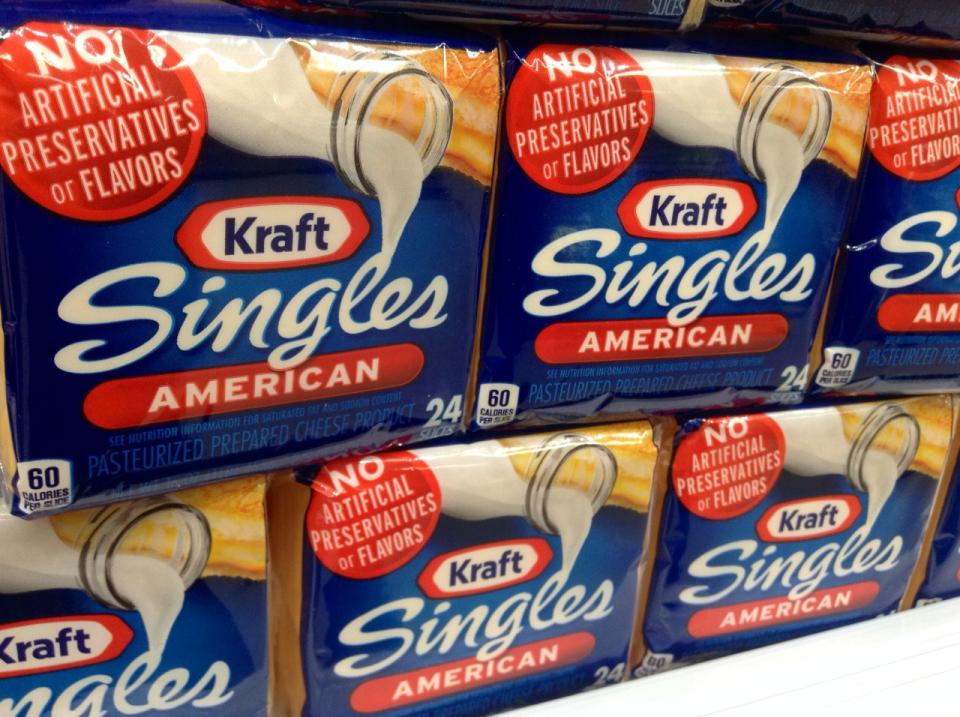When Did Americans Become Such Snobs About American Cheese?
By: Kristin Hunt

Credit: Andrew Zimmer/Thrillist
It was late 2015, and the Facebook community was responding well to cheesy, gooey things. But one posted video, one video of a deliciously fried grilled cheese donut, inspired the fury of five thousand internet commenters. Behold the video at issue:
“If I was going to do this .. I’d find a better cheese than those packaged cheese slices. yuck. ruining a perfectly good donut,” the commenters said. “Why the fake cheese always gotta be used? Y'all too lazy to stop at the deli? Lol,” they said. “American cheese? I could maybe get it on board if the recipe called for real cheese…. #gross,” THEY SAID. The Thrillist editors were shocked and appalled and agreed a little bit, actually.
It was only a few short years ago, after all, when Fat Kid Fridays reigned supreme, Epic Meal Time was still funny, and This Is Why You’re Fat was important enough to become a book. And though many chefs (and Thrillist editors obsessed with burgers) speak in hushed tones of American cheese’s essentialness when it comes to topping burgers, there’s undoubtedly been a shift in public perception. So when did we all become such snobs? When did this happen?? Turns out the tide’s been turning on American cheese for quite awhile. We must begin at the beginning.
More: Dairy Crack: The Science Behind Your Crippling Cheese Addiction

Credit: Flickr/Mike Mozart
Let’s set the stage: In 1970, the average American ate eight pounds of cheese. By 1975, it was up to 10 pounds. By 1980, it had bumped up to 12. Want to know how many pounds of cheese an average American eats today in 2015? 23 pounds. 23 pounds of cheese.
Of course, just because Americans were eating more cheese over the last few decades doesn’t mean it was fancy cheese. But by the 1980s, the U.S. was already looking beyond the processed stuff. In 1983, Dr. Frank Kosikowski founded one of the biggest cheese fan clubs in the country, the American Cheese Society. And these guys were not interested in Velveeta. It was meant to be a “national grassroots organization for cheese appreciation and for home and farm cheesemaking,” and by 1985, they’d already established the kind of multi-category competition usually reserved for pure-breed dogs and craft beer.
It was around this time that Giles Schnierle – a former chef and food industry consultant – also began to focus in on cheese distribution and promotion. In the late ‘80s, he established his first distribution company, Heartland Trading, before ultimately creating his Great American Cheese Collection. The company now represents over 60 small cheesemakers and provides domestic cheese to hundreds of fine dining restaurants in the US. Not bad, Giles.
More: The 21 Best Mac & Cheeses in America

Credit: Flickr/Mike Mozart
Now, you may be thinking, “Sure, some cheese nerds were organizing, but that hardly means everyone was abandoning American for more sophisticated dairy products. That’s true! Although this movement existed outside ACS conferences and Schnierle’s inner circles.
In 1988, The Sun-Sentinel was already dismissing processed cheese as kids’ stuff and breathlessly reporting on domestic chèvres and Camemberts – and the almost 400 specialty cheesemakers creating them.
The artisan cheese movement continued to thrive in the '90s. As Sioux City Journal reports, domestic cheesemaking grew 75% from 1994 to 2003, thanks largely to the vanguards in Wisconsin, New England, and California. By the early aughts, Schnierle had formally organized the Great American Cheese Collection and the ACS started becoming the cool kids’ club. Between 2003 and 2009, membership went from 776 cheeseheads to over 1,200 and the competition cheeses also bumped from 762 to 1,327 entries.
That’s when Big Processed Cheese started panicking. In 2010, Kraft Singles sales fell 17.5%, and spun a whole new campaign linking their slices of American cheese to patriotism. Four years later, the company removed artificial preservatives to appeal to health-minded moms. That at least went over better than what Kraft did next: attempted to slap an Academy of Nutrition and Dietetics logo on its packaging. Those health-minded moms were so mad, the plans were scrapped.
That brings us up to 2015, when, increasingly, "American cheese” is losing heat to actual American cheese, like the kind families make on farms across the nation. It’s been a gradual, multi-decade process.
You expect Europeans to write condescending thinkpieces about American cheese that imply we’re less cultured than Wallace of Wallace and Gromit, but we now may be almost as snobby as our international counterparts. It’s official: Americans have fallen out of love with American cheese.
More from Thrillist:
8 Delicious Alternatives to the Boring Cheeses You’re Probably Eating
8 Foods to Eat If You Want to Live Forever
The One Must-Eat Food in Every State
The Best Pizzeria in Every State in America

